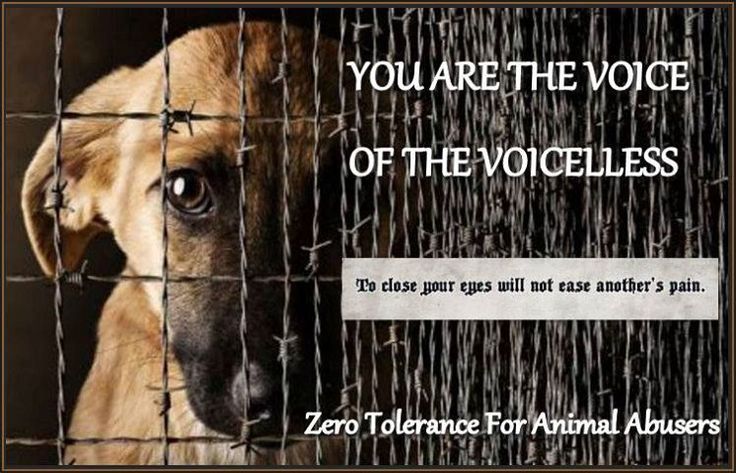The subject of animal abuse conjures up visceral reactions among individuals and communities alike. As staunch advocates for animal rights fervently combat the abhorrent acts perpetrated against these innocent creatures, a troubling question often arises: Can animal abusers be forgiven? This inquiry touches on the foundations of morality, societal norms, and the legal frameworks that govern us. To contend with the complexities surrounding this issue, one must first explore various dimensions including psychological motivations, legal repercussions, the potential for rehabilitation, and broader societal implications.
Understanding the mindset of animal abusers is crucial for unraveling the intricacies of forgiveness and redemption. Many abusers harbor psychological issues, which may stem from a multitude of factors. According to studies, previous trauma, familial dysfunction, or even societal neglect can contribute to an individual’s propensity to harm animals. Some research posits that animal abuse may be a manifestation of deeper-rooted antisocial behaviors or other psychological disorders. This perspective introduces a level of empathy that complicates the black-and-white view of good versus evil. By considering the mental health of abusers, the door to compassion, and potentially forgiveness, may creak open—albeit slowly.
However, societal norms heavily influence our perceptions of justice and morality. In many jurisdictions, animal cruelty laws are becoming more stringent, reflecting a growing societal acknowledgment of the intrinsic worth of all living beings. Legal systems now recognize animals as sentient beings, deserving protection from harm. However, these laws also fluctuate across regions. In places with lenient regulations, offenders might receive minor penalties, leading to frustrations within the community. Such disparities in legal consequence can cloud the discussion of redemption, as frequent offenders may escape meaningful repercussions.
The legal response to animal abuse also raises pertinent questions regarding rehabilitation. Can an individual who has committed such a heinous act ever truly change? Some rehabilitation programs focused on offenders advocate for therapeutic measures rather than mere punitive actions. These programs aim to foster an understanding of empathy, compassion, and respect for all beings. Preliminary studies suggest that, in some cases, individuals who undergo such rehabilitative interventions demonstrate a measurable decrease in repeat offenses. This possibility highlights a crucial aspect of redemption—acknowledgement of wrongdoing and sincere efforts towards change can lay the groundwork for societal reintegration.
Yet, redemption must not overshadow the plight of the victims—the animals themselves. When contemplating forgiveness for abusers, the focus should stay squarely on the trauma inflicted upon the animals. The wounded bodies and spirits of these creatures demand recognition and justice. Advocates argue that while individuals may find a path to personal redemption, the quiet suffering of countless animals must remain at the forefront of discussions surrounding this sensitive subject. This balance is tantamount to ensuring that society does not become desensitized to the horrors of animal abuse.
Moreover, forgiveness in the eyes of the law raises questions about accountability and societal responsibility. Should there be a time limit on how long an abuser must bear the weight of their actions? The concept of “rehabilitative justice” rests on the premise that individuals can learn from their mistakes, fostering personal growth. However, this framework necessitates rigorous monitoring and a commitment from the abuser to uphold non-violence towards animals moving forward. Society must reflect on its values when it comes to forgiving acts that can only be described as profoundly sociopathic.
Additionally, the emotional complexity inherent in forgiveness can lead to conflicting feelings within communities. Animal lovers, who passionately champion the cause of neglected creatures, often find it difficult to reconcile their desire for justice with potential avenues for rehabilitation. The very act of contemplating forgiveness can provoke significant internal conflict. Perceptions of justice vary widely, and while some advocate for harsh penalties, others argue for the possibility of understanding and growth in individuals who have erred. Communities must engage in open dialogues about the balance of justice for both the victims and potential avenues for abusers to amend their ways.
Engaging with the notion of forgiveness in the context of animal abuse urges a deeper examination of our values and the societal structures in place. A shift in perspective is paramount—rather than viewing animal abuse solely as an individual failing, it can be perceived as a collective societal lapse. Cultivating a culture that emphasizes prevention and education could ultimately lead to a decline in both animal abuse and the subsequent calls for forgiveness.
In consequence, the discourse surrounding the potential for forgiving animal abusers hinges upon numerous contributing factors. The amalgamation of psychological understanding, legal ramifications, opportunities for rehabilitation, and societal responsibilities crafts a multifaceted landscape. Advocates for animal rights must engage in nuanced discussions that avoid oversimplification. The road to redemption for animal abusers is fraught with obstacles, yet it is essential to consider every dimension involved in the complex interplay of forgiveness.
In conclusion, animal abusers and the question of forgiveness represent a profound dissonance in moral philosophy and legal discourse. As society steers its perceptions and policies, it faces an intricate tapestry woven with threads of compassion, rage, justice, and the fundamentally sacred connection between humans and animals. Ultimately, while forgiveness may be a possibility, it must always coalesce with the pursuit of justice and the undeniable imperative to protect those who cannot protect themselves.






